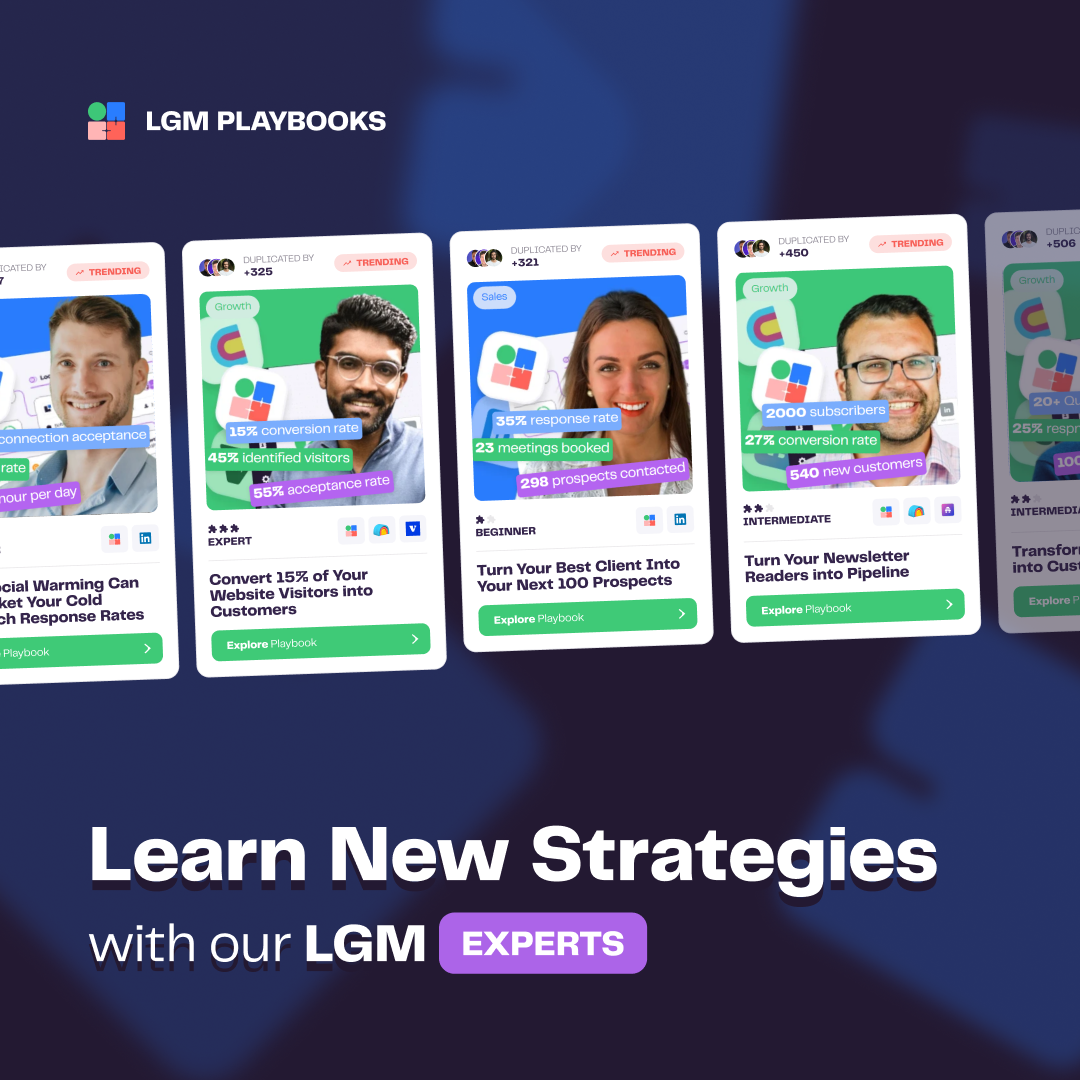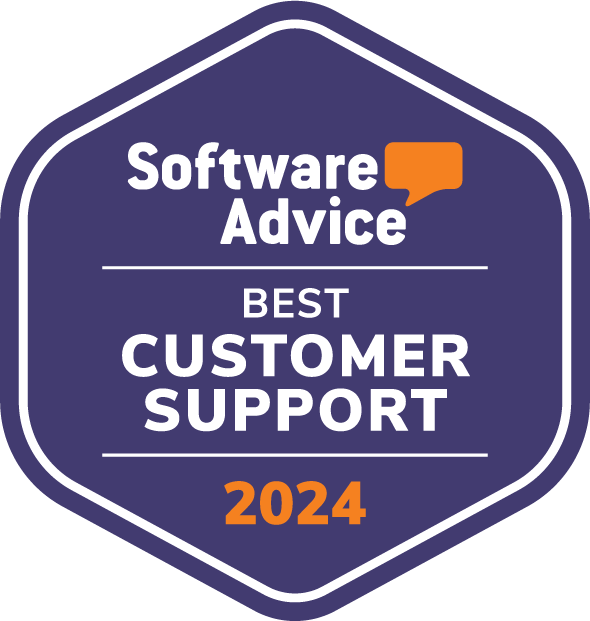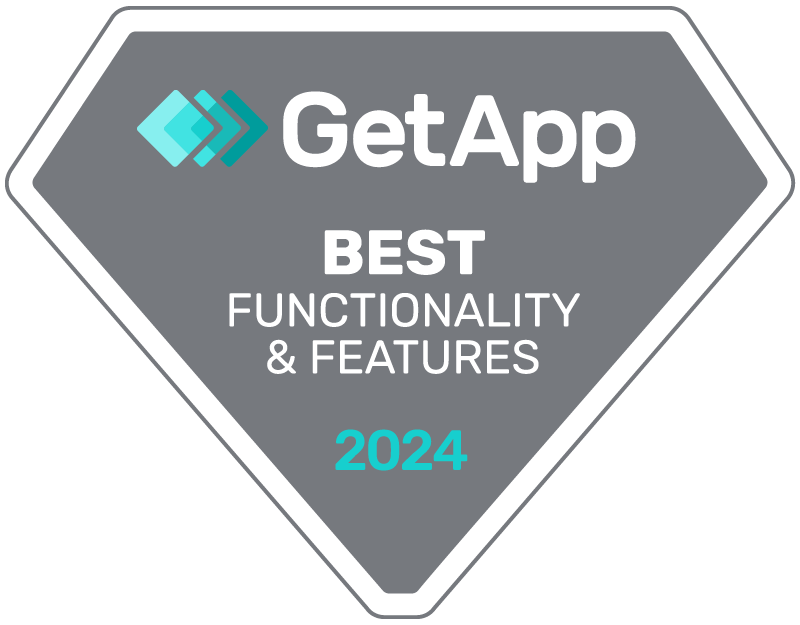TL;DR
Want your tool discovered? Target “best tools for…” articles where prospects and AI search. This strategy boosts visibility and SEO without creating new content.
– Find relevant articles by scraping search results for your keywords.
– Identify target contacts like SEO or Content Managers, or use generic emails.
– Analyze content to find pages mentioning competitors but not you.
– Launch outreach campaigns to get featured and gain authority.
Ready to automate your prospecting? Test La Growth Machine for free for 14 days
Start free trialTable of contents
TL;DR
Want the right people to discover your tool? Start by looking at where your competitors are getting mentioned.
Hint: it’s not on their own blog. It’s in “best tools for…” type articles.
If you’re not in those, your prospects won’t find you, LLMs won’t mention you and you’ll miss out on traffic and authority.
In this article, we’ll show you how to:
- Find the right articles
- Identify the right contacts
- Launch a campaign to get added to those top lists… where you should already be.
All that — without writing a single piece of content.
Why you should target “best tools for…” articles
1. That’s where your prospects are looking
Before testing a tool, people compare.
And to compare, they search for:
- “best tools for…”
- “top software for…”
- “alternatives to X”
These are the articles that influence their decisions. If you’re not in the list, you’re not part of their shortlist. Which means… your competitors take your place.
2. They are LLMs’ favorite type of content
When you ask ChatGPT, Perplexity, or Claude for “the best tools for…”, they do what you do. They look at the articles that rank and compare them.
And guess what? They recommend the tools that are mentioned the most. So the more you show up in these articles, the more likely you are to get picked up by LLMs. That’s a big deal, because more and more people aren’t using Google anymore. They’re asking AI tools directly which solution to use.
Right now, AI search already represents 3% of all search queries (expected to hit 5–10% by 2026). And it’s only growing.
According to Gartner, traditional search (Google, Yahoo, Bing…) is expected to drop by 25% by 2026. So if you’re not mentioned in these articles, you don’t exist — not for Google and not for AI either.
In short: you’ll be invisible tomorrow.
3. The snowball effect
If you had to write your own “best multichannel prospecting tools” article, how would you do it? You’d look at what’s already out there. You’d compare other lists, adjust to fit your tone or angle… then publish.
Result: tools that are already cited keep being cited. It’s a virtuous circle or a vicious one, if you’re not in it. The more you’re mentioned → the more you’ll be mentioned.
4. You boost your SEO without writing a word
UA link in a “top X tools” article means:
- Extra authority (people talk about you, so you look credible)
- A high-quality backlink (great for your SEO)
- Highly qualified traffic (these readers are actively searching for a tool like yours)
Not in those lists yet? Don’t worry — we’re about to show you exactly how to get in.

How to get featured in “best tools for…” articles
Strategy A: Reach out to the right person
Start by identifying the person in charge of the blog content. Think SEO manager, content lead, head of marketing, content manager…
Then send them a personalized message.
Pros:
- You know exactly who you’re talking to
- You can tailor your message
- They’ll quickly understand what you want
Cons:
- If your message feels too automated, it might be ignored
Strategy B: Reach out to a generic email
You can also contact a generic email address like: contact@, info@, hello@, etc.
Today, it’s super easy to find personal data online (LinkedIn profiles, emails, even phone numbers). As a result, people are used to being prospected on those channels. Generic inboxes, on the other hand, are less saturated.
Which means:
- Emails sent there are more likely to be read
- The message feels less like automation
Pros:
- Less competition on this channel
- Lower “this-is-automated” vibe
Cons:
- You don’t know who’s reading it
- Sometimes… no one is
Which strategy should you choose? Our take: Test & learn

There’s no universal truth here. So don’t guess — run an A/B test.
- One campaign targeting the right individuals
- Another campaign targeting generic emails
Then compare:
- Reply rate
- Quality of conversations
- Number of backlinks or article mentions obtained
From there, double down on what works and keep iterating.

The step-by-step process
Step 1: Define the right keywords
First, build a list of keywords you want to rank for or be mentioned in.
At La Growth Machine, here are a few we focus on:
- best multichannel prospecting tools
- best LinkedIn prospecting software
- best outreach tools
- top sales automation tools
- top cold emailing tools
You can use Merge Words to generate all possible keyword combinations.
Also think about keywords related to:
- your features
- your industry
- your unique value proposition
The more keywords you include, the more articles you’ll have to reach out to.

Step 2: Scrape the search results
Once your keywords are ready, it’s time to scrape the Google search results.
Goal: collect all the articles that rank for those queries.
To do this, you can use Apify and the Google Search Results Scraper.
How it works:
- Paste your list of keywords
- Choose how many results you want (e.g. top 10)
- (Optional) Select a language or country
- Run the scraper
- You’ll get a file with all the result links

To avoid pulling results that aren’t actual blog articles, use Google Dorks.
They let you filter search results to:
- Exclude articles from your own site
- Exclude LinkedIn or YouTube URLs
- Keep only URLs that include “blog”
Here’s an example of a search query with dorks:
-site:{{yourWebSite}} -site:linkedin.com -site:youtube.com inurl:blog {{keyword}}You can also use this tool to generate your dork-based searches automatically.
Step 3: Clean the search results
The file you just scraped probably includes:
- Articles from your competitors
- Fake “top” articles (too generic, not actual comparisons)
To clean all that up, upload your CSV file into ChatGPT and ask it to remove:
- All rows that contain competitor domains
- All rows where the article title and description don’t match real “top tool” content (you’ll have this info from Apify)
Here’s the prompt you can use:
Prompt to copy/paste in ChatGPT
Act as a data-cleaning assistant. I’ve just uploaded a CSV file.
Your task: clean this file in 3 precise steps and return only the relevant columns in the final output.
**Step 1 – Remove competitor domains:**
Delete all rows where the "result_url" column contains one of the following domains:
- {{competitor1}}
- {{competitor2}}
- {{competitor3}}
**Step 2 – Remove non-comparative articles:**
This file contains search results for keywords like “best tools for” or “top software for”.
1. Analyze the "title" and "description" columns in each row.
2. Delete any row that’s not a real comparison article.
Examples to exclude: general guides, playbooks, informative articles without direct comparisons between tools.
**Step 3 – Extract domain name:**
For the remaining rows, extract the domain name from each "result_url".
The domain should only include the company name and main domain.
Example:
If result_url is `https://lagrowthmachine.com/blog/how-to-prospect-on-linkedin`,
then the domain is: `lagrowthmachine.com`
**Expected output:**
Once cleaned, return a new CSV with only the following columns:
- search_query
- search_url
- position
- title
- result_url
- description
- domain_name
Give me back a clean CSV file.Step 4: Extract the content of each page
Now it’s time to extract the content of each article, to check whether your tool is already mentioned or not.
Don’t worry, we’re not doing this manually.
We’ll use Derrick, a Google Sheets add-on that lets you enrich, clean and segment your data.
Here’s how:
- Import your cleaned CSV into Google Sheets
- Install Derrick (if you haven’t already)
- Once installed, select “Crawl Website” and choose the column with the article links (“result_url”)
That’s it — in just a few seconds, you’ll get the full text content of each article.

Step 5: Analyze the page content
Once the content has been extracted, you need to check whether your tool is already mentioned in the article.
- Upload it to ChatGPT with the following prompt:
- Export your CSV file from Google Sheets
Prompt to copy/paste
Here is a CSV file. You are designed to analyze the content of web pages listed in each row of the file.
Your task is to analyze the content of a specific page and determine whether {{companyName}} (also known as {{companyNameVar1}} or any other close variation) is mentioned.
The page content is located in the column named "pageText (crawler)".
Instructions:
For each row, search for any occurrence of:
- {{companyName}}
- {{companyNameVar1}}
- {{companyNameVar2}}
This includes typos or close variants that clearly refer to the same brand.
If a mention is found, remove that row from the file.
Return only the rows where the article content does **not** mention {{companyName}}.
Be strict: only keep the row if there is absolutely **no** mention of the brand in any form.
Return a cleaned CSV file.The result: You’ll get a refined list of articles that are relevant… and where your brand hasn’t been mentioned yet. Perfect.
Get 3.5X more leads!
Are you looking to improve your sales department’s efficiency? LaGrowthMachine allows you to generate an average of 3.5x more leads, while saving an incredible amount of time on all your processes. By signing up today, you get a 14-day trial period at no cost to test our tool!
Step 6: Find the right contacts
Strategy A: Contact SEO / Content Managers
With this strategy, the goal is to find the people responsible for content in the companies that published the articles.
Here are a few ways to do it:
- Use Sales Navigator to find the right LinkedIn profile for each company
- Use a Google Dork query like:
- site:linkedin.com/in {{companyName}} {{jobTitle}}
- For example:
site:linkedin.com/in La Growth Machine Content Manager
- Use tools like Persana or Clay, which offer integrated enrichment features
Here’s a list of relevant job titles to target for this campaign:
seo manager, seo lead, head of seo, seo content manager, seo copywriter, content manager, content marketing manager, head of content, head of content marketing, content strategist, editorial manager, content lead, content creator, blog manager, marketing manager, inbound marketing, growth marketing manager, digital marketing manager, brand & content manager, communications manager, responsable communication, marketing, marketer, growth inbound, seo specialist, marketing specialistStrategy B: Contact generic email addresses like “contact@” or “info@”
- Get your list of domain names (from Step 3)
- Go to Hunter.io
- Choose “Upload a list of domains to search”
- Select “Generic emails only”
- Filter by the following categories:
- Human Resources
- Marketing
- Writing & Communication
- Executive

You’ll end up with a list like this:
[email protected]
[email protected]
[email protected]
[email protected]
[email protected]
[email protected]
[email protected]
[email protected]
[email protected]
[email protected]
[email protected]
[email protected]
[email protected]
[email protected]Step 7: Launch your campaigns
You’ve got everything you need:
- The right articles
- The right contacts
Now it’s time to launch your campaign.
And because I’m nice — you can simply duplicate the sequences directly in La Growth Machine 🙂 (With the copy already written for you, of course!)
Strategy B – Contact generic email addresses like “contact@” or “info@”
Campagne B – Contacter les adresses “contact@”
Next steps
You now have everything you need to get featured in every top list in your industry.
But keep in mind — this strategy also works for:
- Any article that mentions your competitors but not you (regardless of the topic)
- Partners who showcase your competitors but haven’t included you yet (like integrations)
- Influencers who talk about your competitors, but haven’t discovered you (yet)
This isn’t just an SEO tactic. It’s a broader visibility strategy. It helps you catch up, and even outpace, your competitors by leveraging their strengths. No need to reinvent the wheel, sometimes you just need to make it spin your way.









Comments